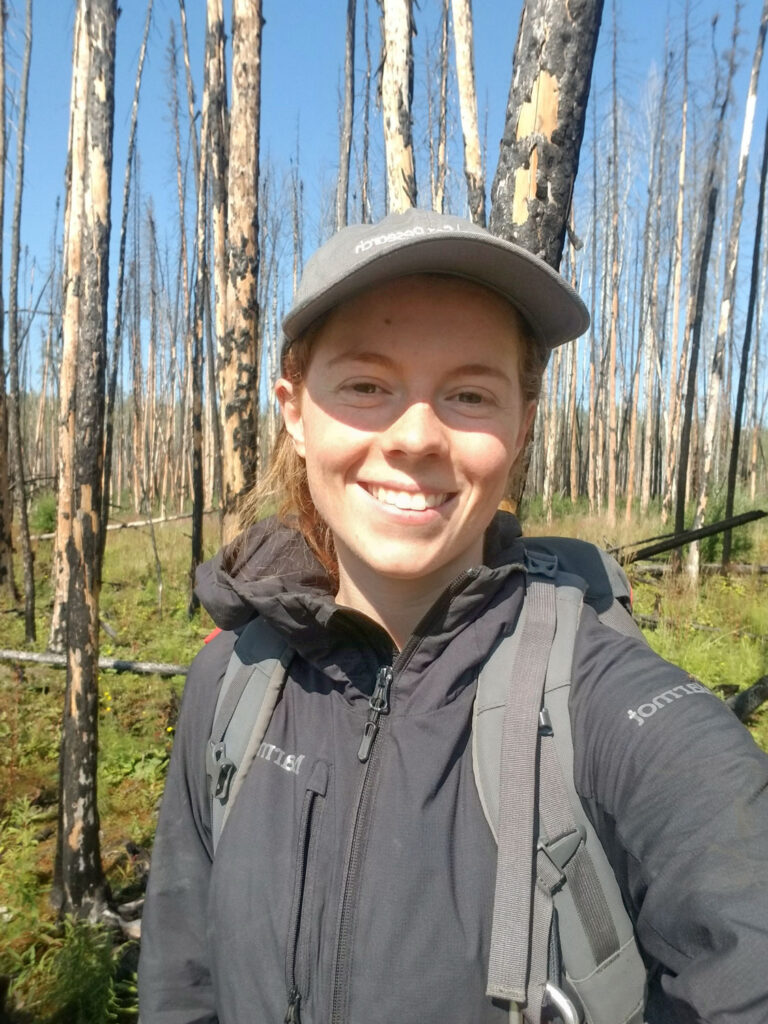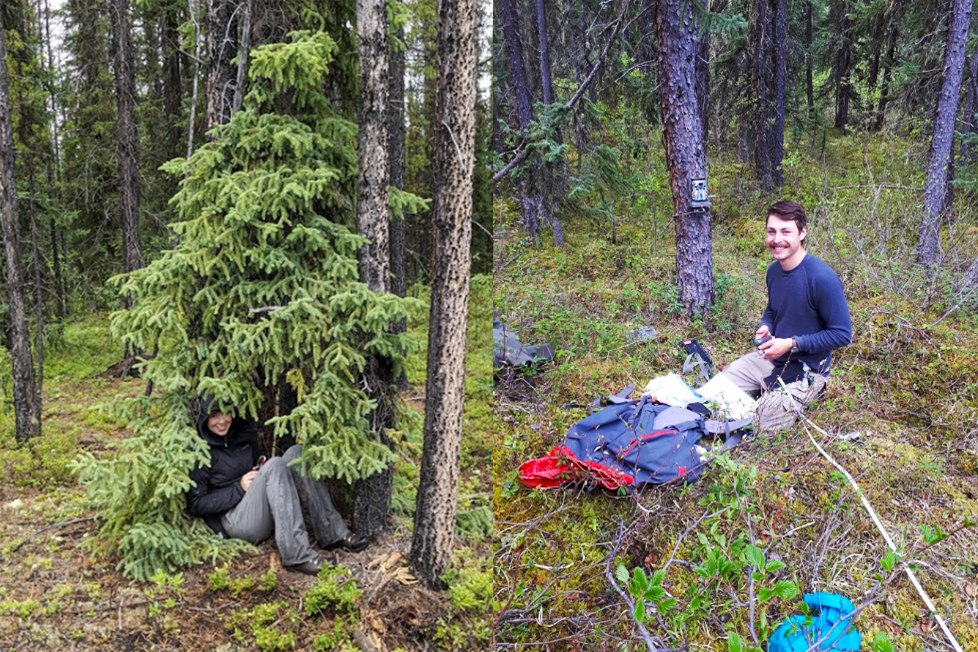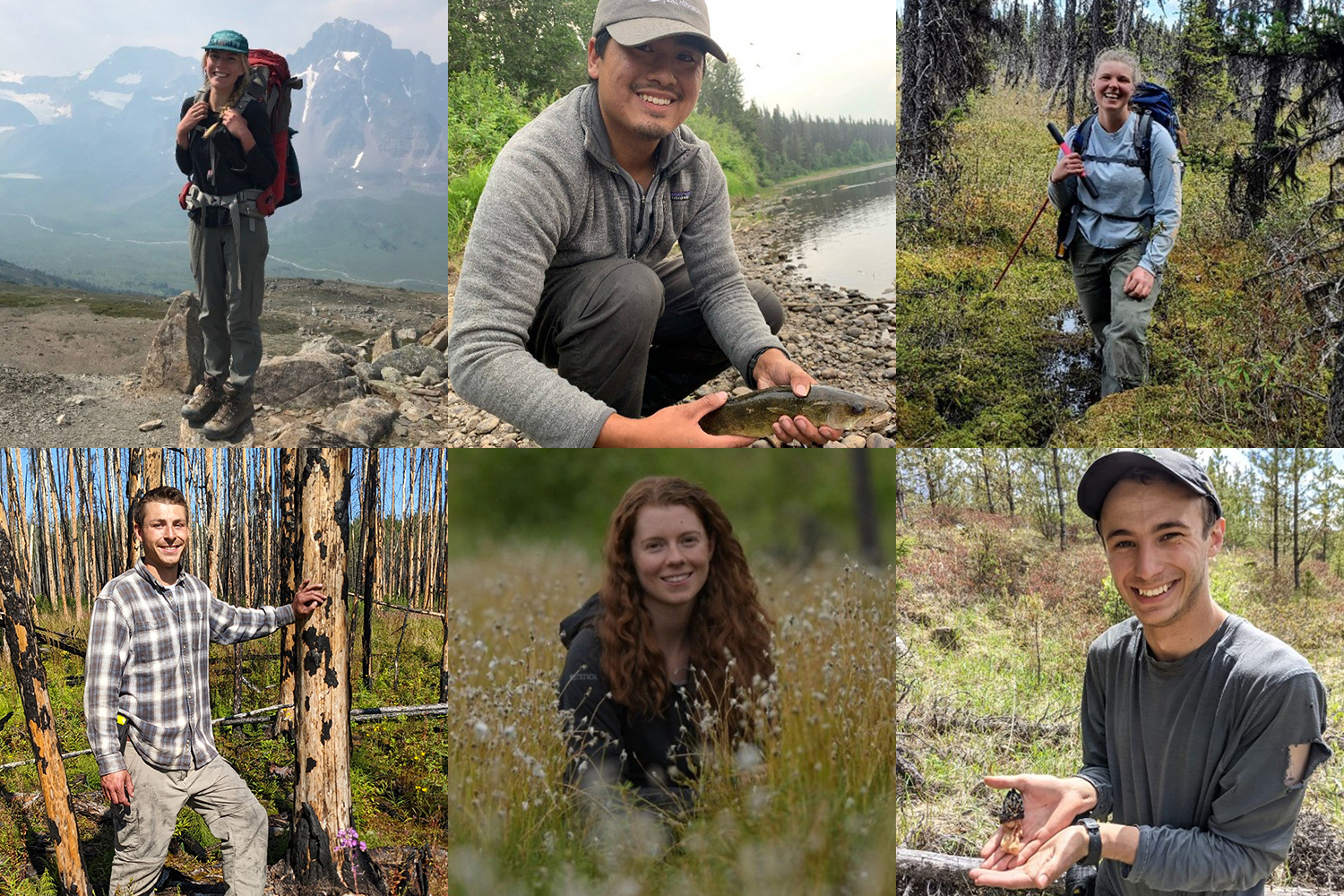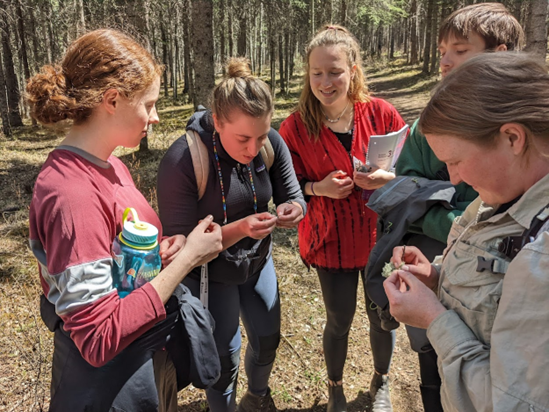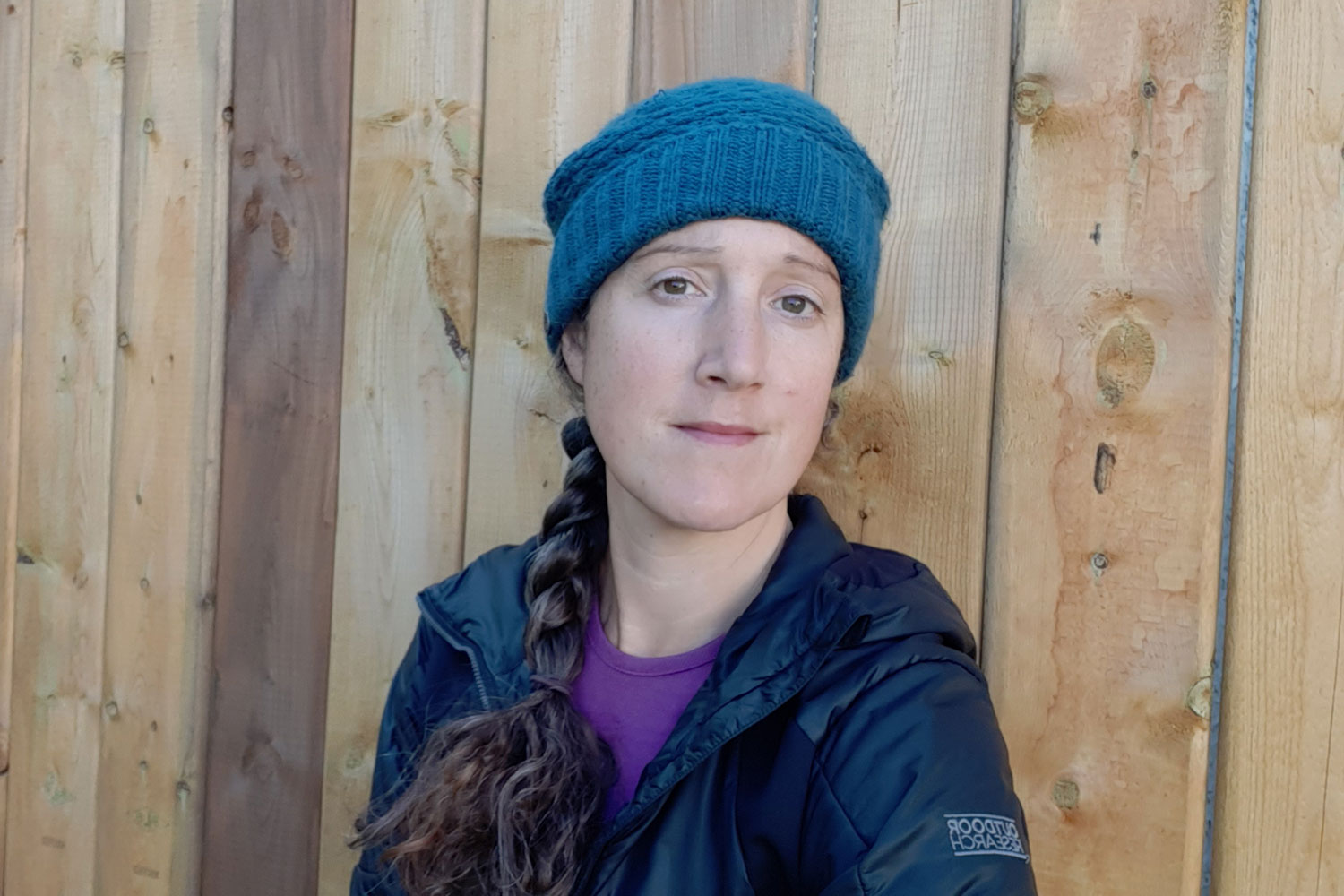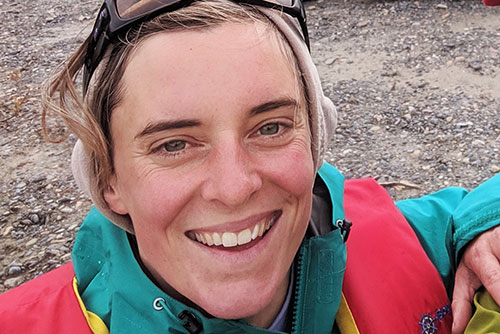
“In the early spring of 2019, we had left our respective Ontario homes three days earlier, after nervously stuffing our cars with field and camping gear, fishing equipment, and whatever else we might need for the coming months in the Rocky Mountains.”
So wrote Solène Williams (and fellow crew member Isaiah Huska) after her second season with the Caribou Program. Now in her sixth year, those first summers still stand out as times when she was pushed – by the job and herself – to learn a host of new skills and grow in confidence.


The project took them far from towns, so for 9-day stints at a time they lived in trailers stationed in remote camps. Under seemingly constant storm clouds, and even more incessant clouds of mosquitos, Solène diligently collected data and vegetation from harvest blocks. Back at the trailer, with rain drumming on the roof and the heater cranked, she tried vainly to dry the growing stacks of musty vegetation that occupied half of the living space.
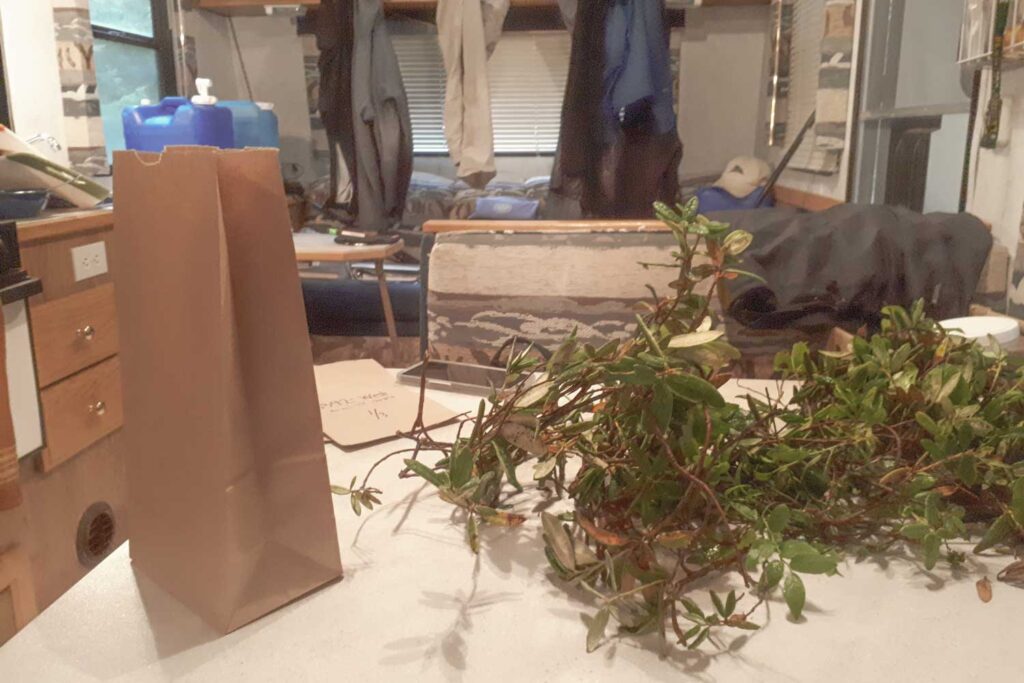
She can’t help but to laugh while reminiscing about those days. “We lived in a constant state of organized chaos, where evenings were spent figuring out how the trailer worked and eating cold soup out of a can while listening to Bill Burr’s podcast”.
Often a full day’s travel away and with only slow satellite messaging devices to communicate with the office in Hinton, the crews had to be able to figure out the daily challenges of fieldwork themselves.
“Solène has been an asset to our program year after year,” says Dr. Laura Finnegan, Caribou Program Lead. “Her attention to detail, organisational, and problem-solving skills helps our work stay on track in the field and the office.”
Chief Fieldwork Officer Leonie Brown echoes those sentiments: “her organizational skills are unmatched. This allows her to be very efficient at any aspect of her work. She is also a very creative thinker.”
Solène thrived on meeting new challenges. In fact, she credits the problem-solving part of the job as a major reason she returned. When there is a question of logistics, she enjoys letting her brain go to work fitting all the pieces of the puzzle together. Each year Solène came back to Hinton, she took on a greater leadership role, and each year she finished the season with more self assurance and a broader skillset to back it up.

“She is a very effective leader and communicator which was instrumental in helping to safely coordinate multiple teams working across the boreal forest of Alberta over the past few field seasons. She takes the initiative to learn new skills, programs, and approaches that will help our research program succeed,” says Laura.
“She has excellent communication skills, which makes her an invaluable teammate,” agrees Leonie. “She teaches new technicians all they need to know and helps others be organized, and she puts in extra hours to bail her teammates out of tight spots without blinking an eye.”
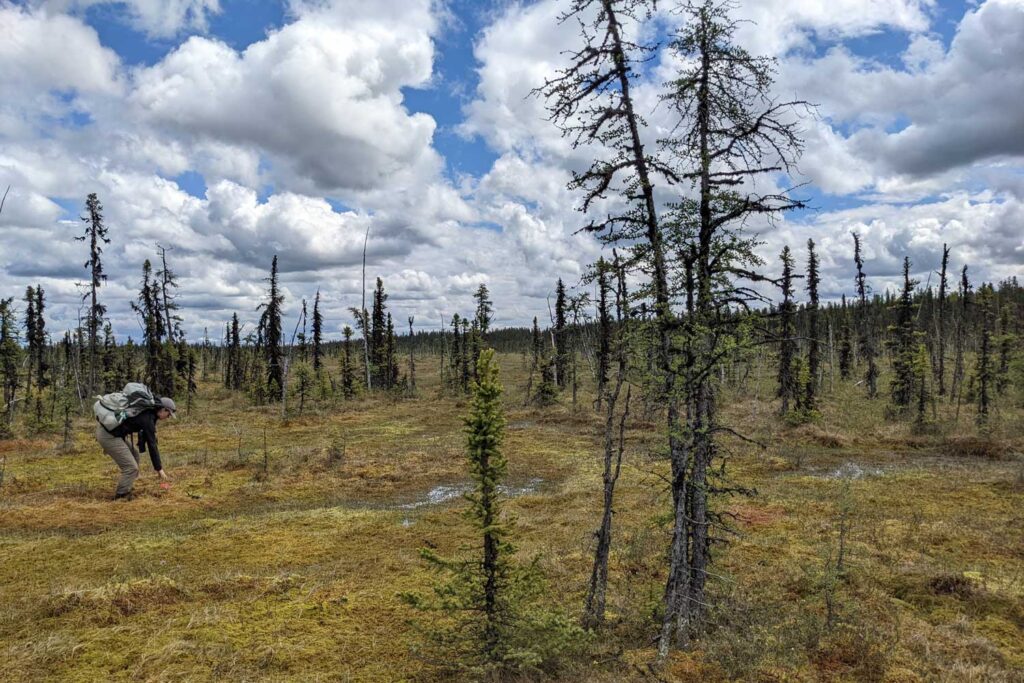
She wasn’t just gaining skills like being able to winch trucks and fix electronics in the field – it was also a deeper feeling for the landscape she was immersed in. A project in her fourth season took her and the crew even deeper into the wilderness, to what the protocol calls “caribou use sites.” In contrast to sites in wildfire burns and harvest blocks, these are a kind of control to tell us how habitat that caribou are confirmed to have selected differs from disturbed areas.
And many of them really do feel different. Sometimes several hours hiking from the nearest sign of human activity, these sites have been where Solène has experienced her most rare animal encounters. In a still black spruce bog, a female caribou warily passed within a few paces of her. As Solène raised her camera, the caribou paused and looked straight at her. That same day, the silence was shattered by the bugling of sandhill cranes driving a fisher away from their nests.
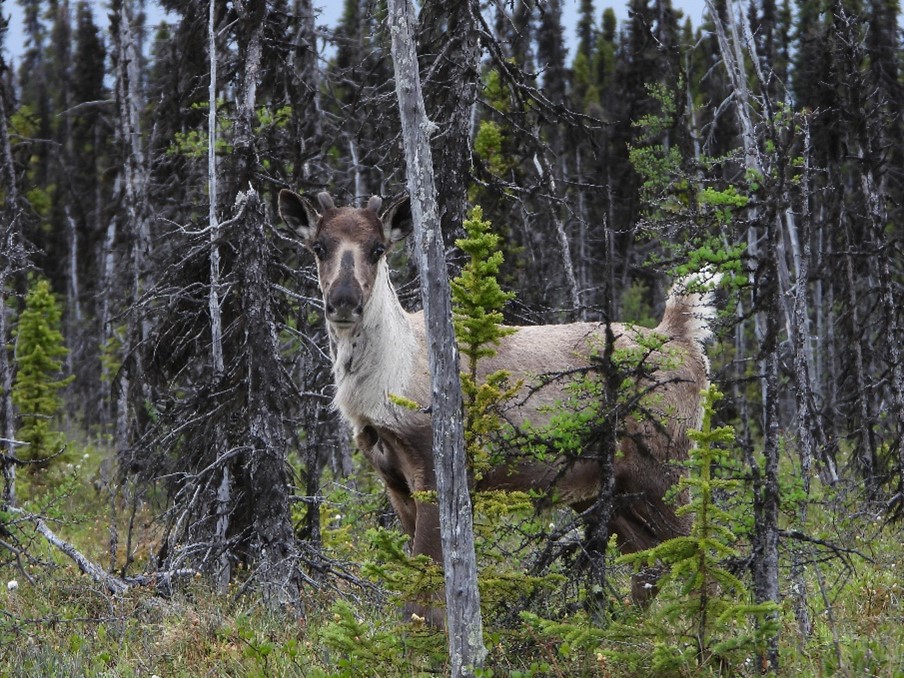
As Solène recounts the story, she talks about how she felt connected to nature in those moments, feeling at peace, but at the same time her puzzle-loving brain delighting in being able to understand the chain of events going on around her – cranes yelling in the distance, then a nearby grouse in distress, then a fisher slipping away. But not every wildlife encounter could be so cooly observed.
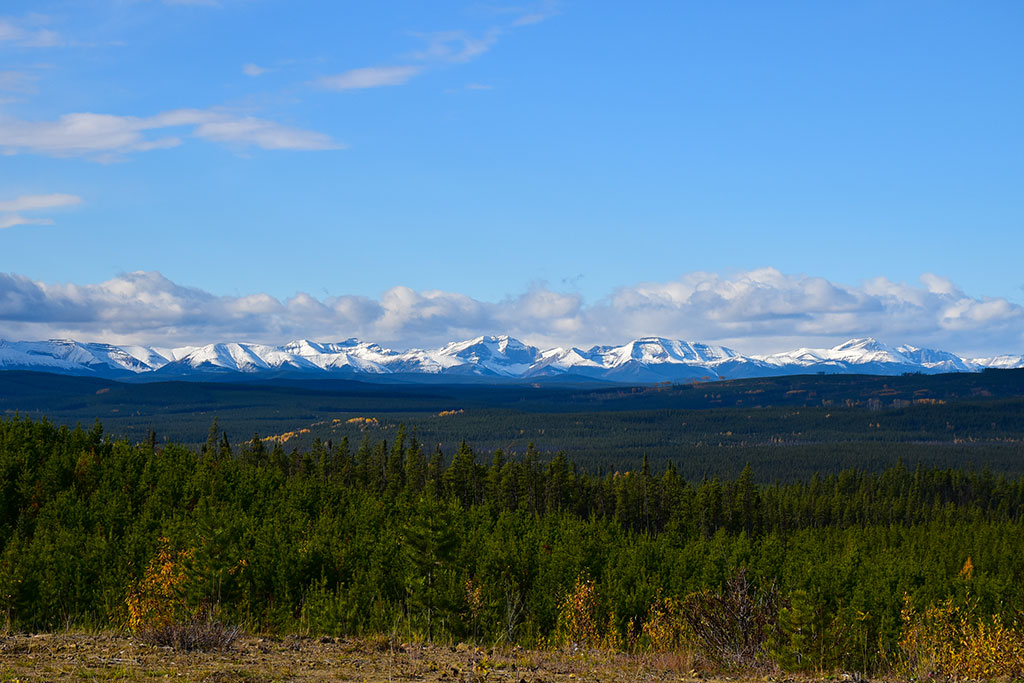
Last fall, Solène and her crewmate Courtney had reached a different site through a fairly dense bushwhack and had just unpacked their field equipment when she heard a branch break. That’s not exactly rare, so she continued with the protocol, but it was clearly filed in the back of her mind because when another stick snapped much closer, she was on high alert. There was a bear creeping through the trees, less than 10 meters away. In an instant, both crew members were on their feet, bear spray at the ready.
Solène recalled, “it was strange because we were in a lively discussion on our way to that site, and projecting your voice in the backcountry is your best tool to deter bears or avoid any surprises.”
Once spotted, the bear edged around the site, seeming intent on staying close. They began backing away, keeping the bear in front of them, but the bear was now blocking the way they came.
“In these moments a lot of things are running through my mind while I am communicating with my team member,” Solène tells me. “Is it a black bear or grizzly bear? Is it alone or with cubs? What kind of approach is it making? Is it defensive or aggressive? Do we have our InReach device? Answers to these questions normally dictate how I would react to such an event.
“Unfortunately for us, the surrounding forest was so thick that all we ever saw were flashes of long brown bear-y fur and an idea of its relative size – and it’s amazing how silently they move through the forest despite their size and weight. So, we knew it was a bear, but we were only able to guess at the species the next day when we returned to the site and checked the trail camera.”

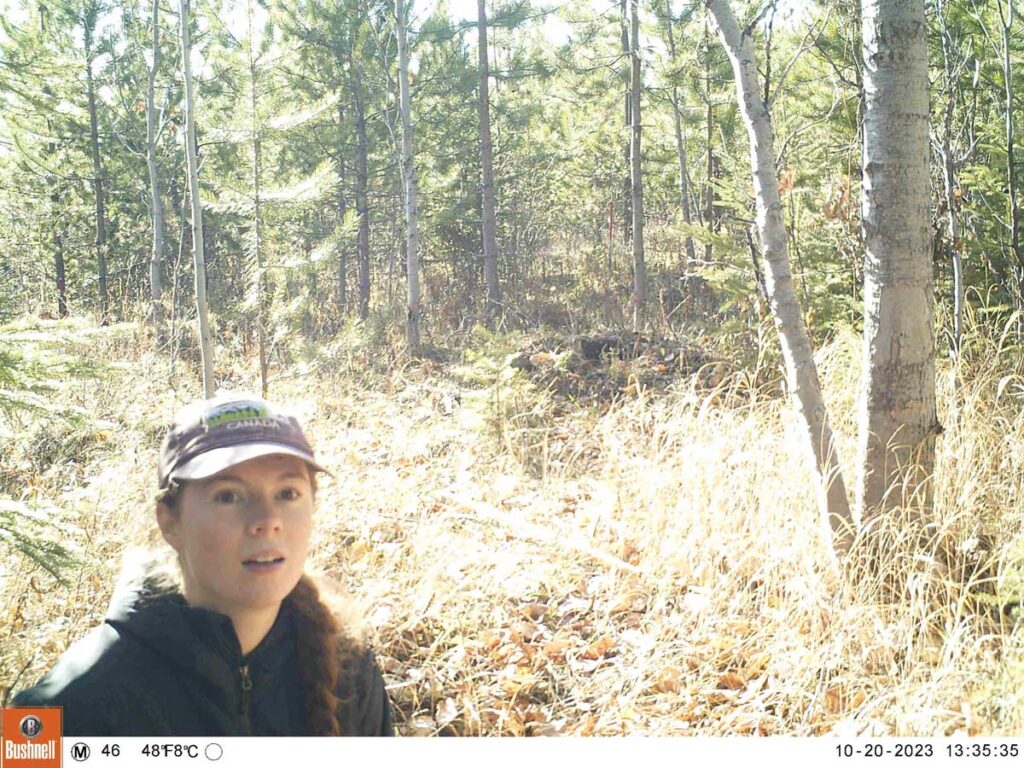
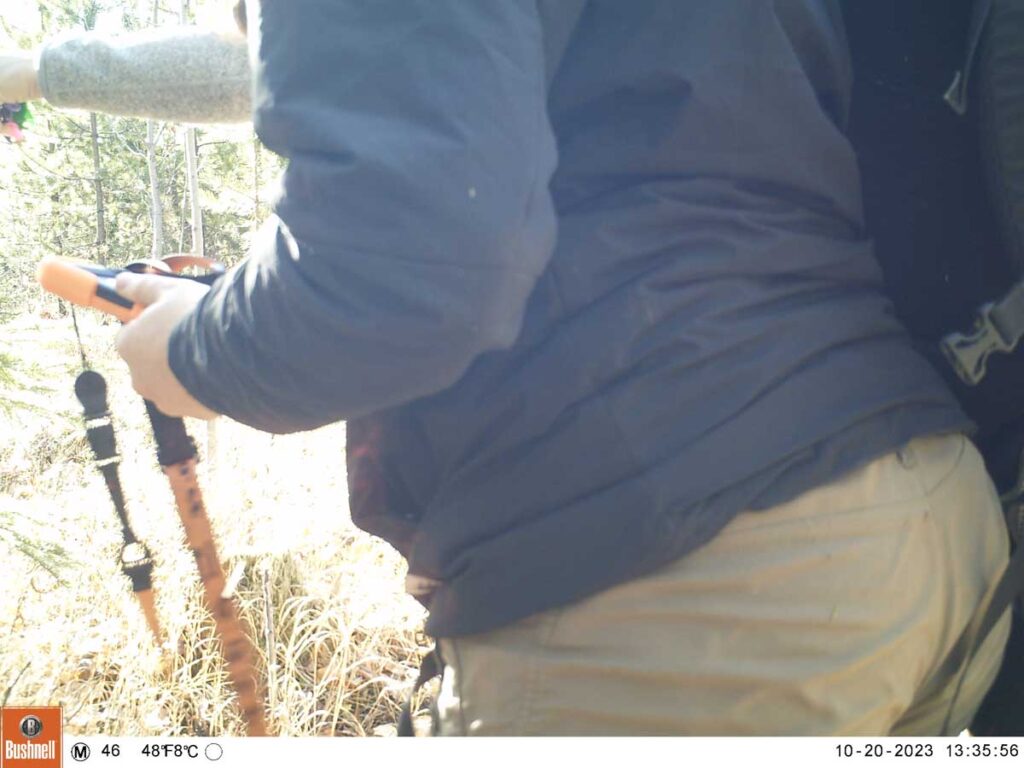
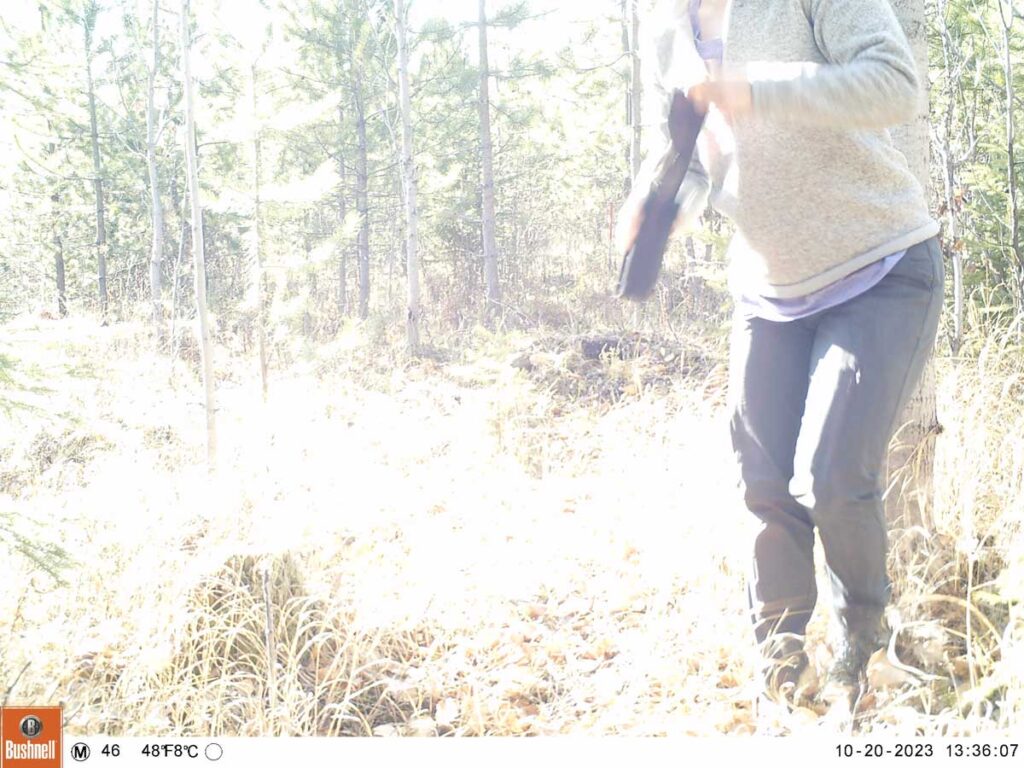
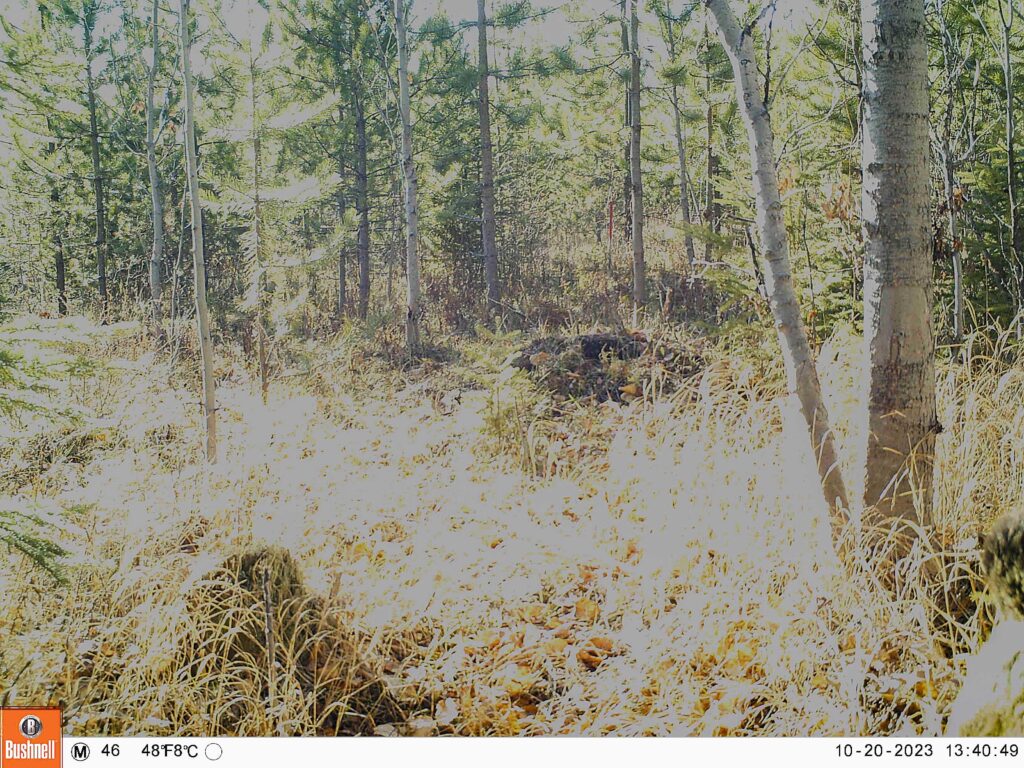
Solène thought the bear was much too persistent and purposeful to be defensive or merely curious. Maybe it had been food conditioned. Less likely was a predatory approach, although the thought occurred to her. Either way, it was time to leave.
Despite having to leave the navigation gear behind unexpectedly, Solène remembered seeing a cutline from the satellite imagery that eventually connects to the road where their truck was parked. They were able to exit the forest and eventually make it back without further trouble.
This was a serious test under pressure, and Solène learned that she can make fast, effective decisions when it matters. It was one of many interactions that left her with a greater appreciation for these animals, rather than fear. It was the unknown that made her nervous when she was packing up her car in 2019. This was just one more experience that helped her to better know and trust herself.
Solène and Isaiah concluded their 2020 blog:
“Every moment from those last eight months are treasured memories – from seeing the beauty and diversity of Alberta’s remote forests and all the creatures that crossed our paths, to the difficult and demanding field days. It was a great adventure full of excitement, new experiences and challenges to work through that helped us both grow in many ways. Although we do miss the simpler, unplugged life of field work, it’s inevitable that our next adventure awaits us in no time.”
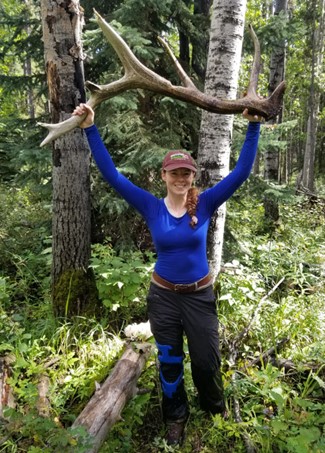
After stepping up (again) to help the crews out this summer, Solène’s next adventure will be into the world of data analysis, working with the data that she collected back in those first two seasons. The Caribou Program has put her into statistics boot camp to brush up on generalized linear models, and then it’ll be a dive into silviculture practices. The ultimate goal is to directly relate different forestry treatments to the forage foods important to moose, deer, elk, and bears.
Having spent so much time in harvest blocks, wondering about all the microclimate and regeneration effects different harvest and treatment methods are having, Solène is looking forward to digging into the literature and seeing how her impressions compare with what the statistics say at the end.
We’ve been fortunate to have Solène as a teammate these past six years. Our job is to keep giving her interesting new challenges, feed her curiosity, and be a place she can grow and see her career advance.
